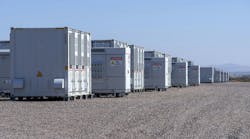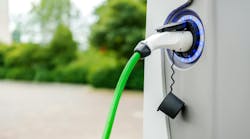Ongoing communication efforts and increased price satisfaction are key drivers behind the third consecutive year of improved overall customer satisfaction with residential electric utility companies, according to the J.D. Power 2015 Electric Utility Residential Customer Satisfaction Study.
The study, now in its 17th year, measures customer satisfaction with electric utility companies by examining six factors: power quality and reliability; price; billing and payment; corporate citizenship; communications; and customer service. Satisfaction is calculated on a 1,000-point scale.
Overall satisfaction averages 668 in 2015, a 21-point improvement from 2014. A 33-point increase in communications (625) and a 35-point improvement in price (595) are key contributors to the year-over-year improvement in overall satisfaction.
The average monthly bill remains unchanged this year from 2014 at $132 per month; yet, customer satisfaction improves more in the price factor than in any previous year. One contributor to the increase in price satisfaction is that fewer customers have read or heard about a rate increase in 2015, compared with 2014 (32% vs. 38%, respectively), while a slightly higher percentage have read or heard about a rate decrease (4% vs. 3%).
“Utility companies are doing a better job at the fundamentals—minimizing service interruptions, communicating with customers and improving customer service,” said John Hazen, senior director of the energy practice at J.D. Power. “Proactive communication during power outages remains a challenge, suggesting that utilities should focus on improving in this area.”
The study finds that utility companies are providing critical information during a power outage, such as the cause of the outage, the number of customers impacted and more accurate estimates on when power will be restored. However, proactive communications—i.e., when a utility calls, emails, or sends a text message—are only reaching 7.3 percent of customers, a slight increase from 5.6 percent in 2014. Power quality and reliability satisfaction among customers who receive proactive updates during an outage is significantly higher (777) than among those who do not receive such communications (683).
“The industry knows this is a key component of effective communication, but implementation is not happening fast enough,” said Hazen. “Many utility companies are moving in this direction, but the industry as a whole has been slow to institute proactive communications.”
Solar Power
Nearly three in 10 customers are considering solar power in the next two years. Slightly more than one-fourth (28%) of customers who do not already have solar power say they “probably will” or “definitely will” consider using solar power in the next two years. The main reasons for considering solar are to reduce their bill, positively impact the environment and protect against rising energy costs. Solar power has had a notable effect in the utility industry. Among customers who currently have solar power, 33 percent have developed a positive opinion of their utility.
“As solar penetration increases utilities must be ready to handle the call volume from customers with questions related to new system installation, ongoing usage and billing,” said Hazen. “Until customers become familiar with their solar system, they are three times more likely to call their utility to better understand myriad of issues that arise compared with those that don’t have a solar system. Utilities will need to ramp up their incoming and outgoing communications processes to meet the growing demand.”
KEY FINDINGS
- Among the 48 states included in the study, satisfaction is highest among customers in Georgia, Arizona and Utah and lowest among those in Connecticut, West Virginia and Massachusetts.
- Communications about a utility company’s infrastructure are among the topics that most resonate with customers. Communications satisfaction is 767 among customers who indicate that the topic of the most recent communication from their utility was the reliability of electric delivery. Satisfaction among customers whose most recent communication concerned electric system upgrades or improvements is 751. Satisfaction among customers who received communications about price or rate changes averages 683 vs. 625 among those who receive no price or rate communication at all from their utility.
- Billing and payment satisfaction is higher among customers who receive bill alerts than among those who do not receive such alerts (765 vs. 706, respectively).
- The majority of customers perceive their electric utility provider as a good corporate citizen, as 62 percent believe their utility supports economic development of local community and 32 percent are aware of their utility’s efforts to improve its impact on the environment.
Study Rankings
The Electric Utility Residential Customer Satisfaction Study ranks midsize and large utility companies in four geographic regions: East, Midwest, South and West. Companies in the midsize utility segment serve between 100,000 and 499,999 residential customers, while companies in the large utility segment serve 500,000 or more residential customers.
East Region
PPL Electric Utilities ranks highest among large utilities in the East region for a fourth consecutive year, with a score of 693. PSE&G (680) ranks second, followed by Duquesne Light (676), Con Edison (673) and BGE (664)
Among midsize utilities in the East region, Southern Maryland Electric Cooperative ranks highest for an eighth consecutive year, with a score of 727. Penn Power (674) ranks second; Delmarva Power (669) ranks third; and Green Mountain and Met-Ed (656 each) rank fourth in a tie.
Midwest Region
MidAmerican Energy ranks highest in the large utility segment in the Midwest region for an eighth consecutive year, with a score of 692. DTE Energy (681) ranks second; Alliant Energy (674) ranks third; and Consumers Energy and Xcel-Energy Midwest (670 each) rank fourth in a tie.
Connexus Energy and Otter Tail Power Company tie for highest ranking in the midsize segment in the Midwest region (694 each), making this the first time each utility has ranked highest in this study. Great Lakes Energy (693) ranks third, followed by Kentucky Utilities (691) and Minnesota Power (689).
South Region
OG&E ranks highest in the large utility segment in the South region for a third consecutive year, with a score of 710. Alabama Power ranks second (707); Georgia Power ranks third (705); and CPS Energy and Florida Power & Light (700 each) rank fourth in a tie.
SECO Energy ranks highest in the midsize utility segment in the South region with a score of 749 for the first time, followed closely by NOVEC at 746. Walton EMC ranks third (735); Sawnee EMC (733) ranks fourth; and Jackson EMC (730) ranks fifth.
West Region
Salt River Project (SRP) ranks highest in the large utility segment in the West region for a 14th consecutive year, with a score of 738. SMUD (723) ranks second, followed by Portland General Electric (698), Rocky Mountain Power (696) and APS (692).
Clark Public Utilities ranks highest in the midsize utility segment in the West region for an eighth consecutive year, with a score of 717. Colorado Springs Utilities ranks second (692), followed by Seattle City Light (687), Idaho Power (685) and Tacoma Power (684).
The 2015 Electric Utility Residential Customer Satisfaction Study is based on responses from 102,525 online interviews conducted July 2014 through May 2015 among residential customers of 140 electric utility brands across the United States, which collectively represent more than 96 million households.


